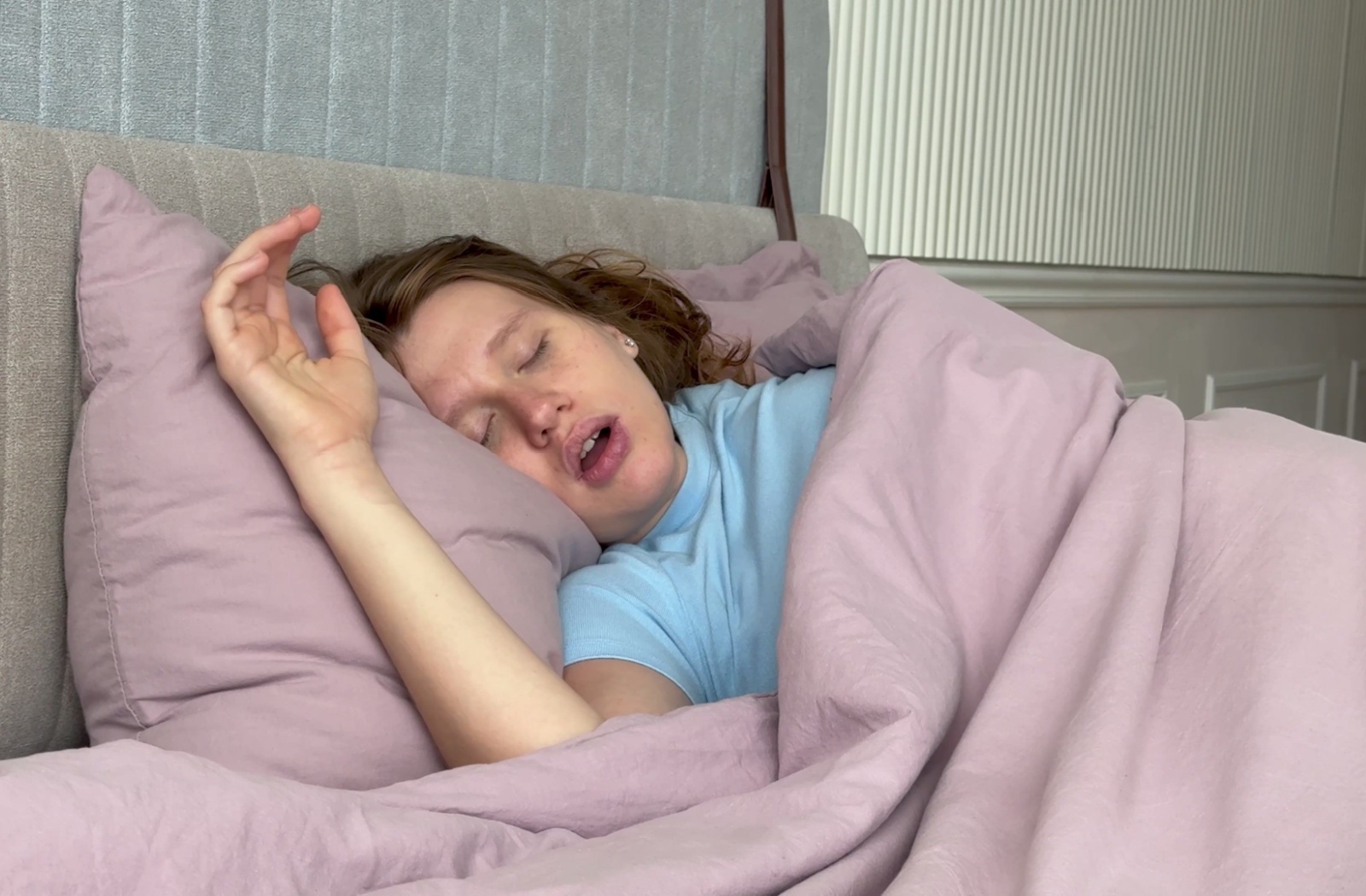Is Sleep Apnea Hereditary? | Peace River

You might notice that certain health conditions appear to run in your family, from eye colour to more complex issues. Sleep apnea can be one of those conditions. As a result, you might be wondering if your genes play a role in how well you sleep.
While lifestyle choices are a significant factor, family history does contribute to your likelihood of developing sleep apnea. Yes, sleep apnea can have a hereditary component, as genetic factors can influence the physical traits that increase your risk. Research suggests that first-degree relatives of people with sleep apnea have a greater chance of having the condition themselves.
The Connection Between Family History & Sleep Apnea
You may notice that sleep apnea is common among your relatives. While your daily habits play a role, specific genetic factors can increase the likelihood of someone developing the condition. This is why close family members often share a similar risk level.
How Genes Influence Your Risk
Your genes can affect your body in several ways that contribute to sleep apnea. Genetic factors can influence your body weight, the anatomy of your face, and even how your brain controls breathing during sleep. About 40% of the difference in sleep apnea between people is thought to be due to genetics.
Physical Traits You Can Inherit
Some of the physical features linked to sleep apnea can be passed down through families. These traits can create a narrower airway, which makes a blockage more likely when you're asleep. This can affect how easily you breathe throughout the night. Other contributing factors include:
- Body fat distribution, especially around the neck
- The shape of your face & skull
- The size of your jaw & tongue
- Enlarged tonsils or adenoids
Obstructive & Central Sleep Apnea
It's helpful to know that there are two main types of this condition. Obstructive Sleep Apnea (OSA) happens when your airway is physically blocked during sleep. Central Sleep Apnea (CSA) occurs when your brain doesn't send the right signals to the muscles that control breathing.
Common Warning Signs of Sleep Apnea
The signs of sleep apnea can be subtle, but they often disrupt sleep quality for you and your partner. Recognizing these symptoms is the first step toward feeling more rested. Paying attention to these clues can help you understand what might be happening during the night.
Symptoms in Adults
- Loud or frequent snoring
- Gasping or choking sounds during sleep
- Pauses in breathing observed by another person
- Waking up with a dry mouth or headache
- Daytime sleepiness or fatigue
- Difficulty with concentration
Signs in Children
Inchildren, the symptoms can look a little different and may be mistaken for behavioural issues. However, it’s important to diagnose sleep apnea correctly in children, as it can affect a child's development and well-being. Look out for consistent patterns that might point to a sleep issue.
- Habitual snoring
- Mouth breathing, both day & night
- Bedwetting
- Night sweats
- Hyperactivity or learning difficulties
Factors That Increase Your Risk
While genetics play a role, other factors can contribute to the development of sleep apnea.
Your Health & Lifestyle
Your daily habits and overall health have a direct impact on your breathing during sleep. Certain lifestyle choices can increase the likelihood of airway obstruction. Factors like weight gain, smoking, and regular nasal congestion can all raise your risk.
How Age & Sex Play a Role
Sleep apnea is more common in men than in women—though a woman's risk increases after menopause. The condition also becomes more frequent as people get older. It often starts between the ages of 30 and 40 and continues into the senior years.
Anatomy & Physical Structure
Your unique physical makeup can create a higher risk for airway issues. A large neck circumference, a narrow throat, or a receded lower jaw can all contribute to a smaller airway. This makes the airway more likely to collapse during sleep and interrupt breathing.

How Sleep Apnea Develops Over Time
Sleep apnea isn’t always something you are born with. For many people, it develops or worsens over the years. It is often due to a combination of inherited traits and life circumstances.
Sleep Apnea in Childhood
When sleep apnea appears in children, it's often linked to enlarged tonsils and adenoids. Obesity is also a growing cause of sleep-disordered breathing in kids. In some infants, particularly those born prematurely, the condition may be present due to their still-developing respiratory systems.
Changes in Adulthood & Senior Years
As you age, muscle tone in your throat can decrease, which may lead to airway collapse. Weight gain, which is more common in middle age, is another significant factor that can cause sleep apnea to appear. These changes can make the condition more noticeable later in life.
Find a Diagnosis & Treatment
If you or a family member has symptoms of sleep apnea, it's a good idea to discuss your concerns with a health professional. Getting a proper diagnosis can open the door to effective treatments. This can improve your sleep and overall well-being.
Talk With a Professional
The first step is to schedule a conversation with a doctor or dentist. They can review your symptoms and medical history to determine the next steps. A professional can help you navigate the process of getting answers.
A Sleep Study & Diagnosis
To confirm a diagnosis, you will likely need a sleep study. This test monitors your breathing, oxygen levels, and heart rate while you sleep. It can be done overnight at a sleep centre or sometimes with a take-home kit.
Lifestyle Adjustments
For some, making changes to daily routines can make a difference. This might include weight management to reduce pressure on the airway. Changes in sleep position or quitting smoking can also be effective steps.
Oral Appliance Therapy
An alternative to other treatments is a custom-fit oral appliance. This device looks similar to a mouthguard and works by repositioning your jaw or tongue to keep your airway open. We can design and fit an oral appliance to help you breathe easier and sleep better.
For some children and adults, a tongue tie (restricted tongue movement due to a short or tight lingual frenulum) can contribute to sleep-disordered breathing and airway problems. Releasing the tongue tie can improve oral function, encourage proper tongue posture, and support healthier breathing during sleep.
At Wing Dental Center, we provide tongue tie release as part of our sleep solutions for both children and adults. For both kids and adults, this treatment can help with airway obstruction, snoring, and overall sleep quality, thereby improving rest and long-term health.
Understanding your family history is a powerful tool for protecting your health, and getting quality sleep is a big part of it. If you suspect you or your child may have sleep apnea, know that effective treatment options are available. From lifestyle changes and oral appliance therapy to tongue tie release, our team can provide solutions that support healthy breathing and restful nights.
At Wing Dental Center, we offer both adult and child sleep solutions tailored to your unique needs. Whether you’re concerned about your own sleep or your child’s, we’re here to help you explore treatment options and find lasting relief. Contact us today to schedule a consultation and take the first step toward easier breathing and better sleep.